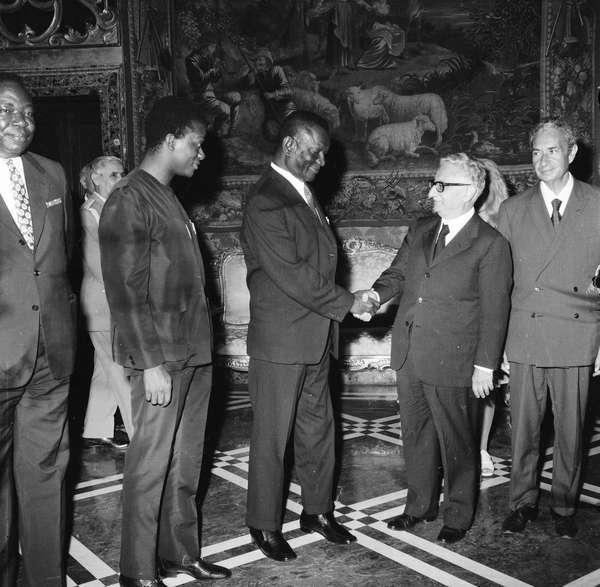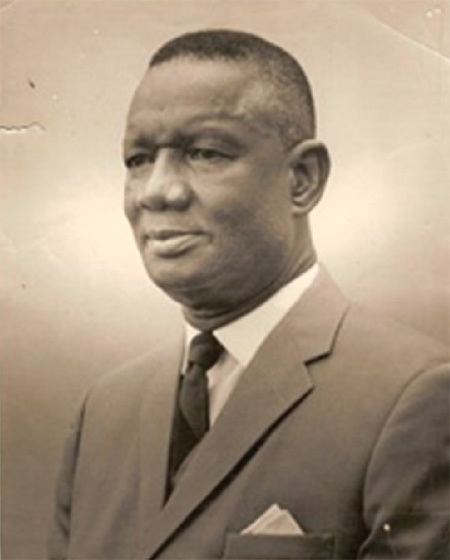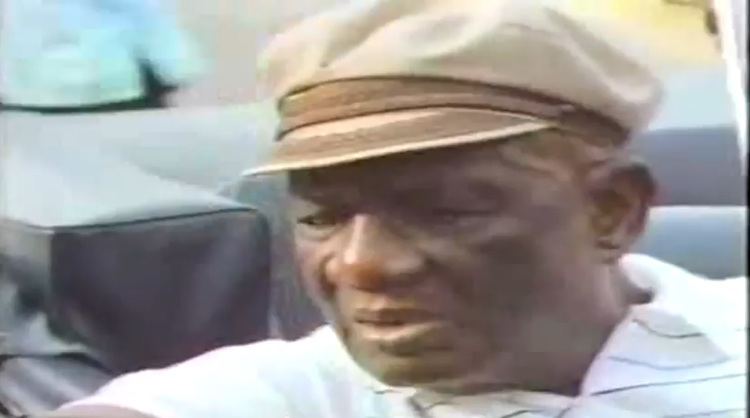Preceded by Position created Books What Life Has Taught Me | Name Siaka Stevens Children Jengo Stevens Succeeded by Position abolished Role Member of Parliament | |
 | ||
Similar People Joseph Saidu Momoh, Sorie Ibrahim Koroma, Ernest Bai Koroma, Christian Alusine Kamara‑Taylor, Sia Koroma | ||
Preceded by Leopold Sedar Senghor | ||
Siaka Probyn Stevens (24 August 1905 – 29 May 1988) was the leader of Sierra Leone from 1967 to 1985, serving as Prime Minister from 1967 to 1971 and as President from 1971 to 1985. Stevens' leadership was often characterised by patrimonial rule and self worship, consolidating power by means of corruption and exploitation.
Contents
- SYND 22 3 81 PRESIDENT STEVENS OF SIERA LEONE ARRIVES TO NAIROBI
- CUTS 20 3 81 PRESIDENT OF SIERRA LEONE AND OAU IN SALISBURY FOR CONFERENCE
- Early life
- Political career
- Interrupted Premiership
- The Stevens Presidency
- Retirement
- References

Stevens and his All People's Congress (APC) party won the closely contested 1967 Sierra Leone general elections over incumbent Prime Minister Sir Albert Margai of the Sierra Leone People's Party (SLPP). In April 1971, Stevens made Sierra Leone a republic and became president a day after the constitution had been ratified by the Parliament of Sierra Leone. He was the second President of the Republic after Christopher Okoro Cole, a judge, who was sworn in for a day after which he resigned, paving the way for Stevens.
Stevens served as Chairman of the Organisation of African Unity (OAU) from 1 July 1980 to 24 June 1981 and engineered the creation of the Mano River Union, a three-country economic federation of Sierra Leone, Liberia and Guinea.

Stevens retired from office at the end of his term on 28 November 1985. After pressuring all other potential successors to step aside, he chose Major-General Joseph Saidu Momoh, the commander of the Sierra Leone Armed Forces, as his successor.

SYND 22 3 81 PRESIDENT STEVENS OF SIERA LEONE ARRIVES TO NAIROBI
CUTS 20 3 81 PRESIDENT OF SIERRA LEONE AND O.A.U. IN SALISBURY FOR CONFERENCE
Early life
Siaka Probyn Stevens was born on 24 August 1905 in Moyamba, Moyamba District in the Southern Province of British Sierra Leone to a Limba father and a Mende mother. Although born in Moyamba, Stevens was largely raised in Freetown. Stevens completed his primary education in Freetown and completed secondary school at Albert Academy in Freetown, before joining the Sierra Leone Police Force. From 1923 to 1930, Stevens rose to the rank of First Class Sergeant and Musketry Instructor.
From 1931 to 1946, he worked on the construction of the Sierra Leone Development Company (DELCO) railway, linking the Port of Pepel with the iron ore mines at Marampa. In 1943, he helped co-found the United Mine Workers Union and was appointed to the Protectorate Assembly in 1946 to represent worker interests. In 1947, Stevens studied labour relations at Ruskin College.
Political career
In 1951, Stevens co-founded the Sierra Leone People's Party (SLPP) and was elected to the Legislative Council. A year later, he became Sierra Leone's first Minister of Mines, Lands, and Labor. In 1957, he was elected to the House of Representatives as a member for Port Loko constituency, but lost his seat as a result of an election petition. APC was founded in 1963/64 when he visited East Germany, with Sheku Magona and Kade Kamara, with Kade Kamara going to China to getting the seed money for the start of the party.
After disagreements with the SLPP leadership, Stevens broke ties with the party and co-founded the People's National Party (PNP), of which he was the first secretary-general and deputy leader. In 1959, he participated in independence talks in London. When the talks concluded, however, he was the only delegate who refused to sign the agreement on the grounds that there had been a secret defence pact between Sierra Leone and the United Kingdom. Another point of contention was the Sierra Leonean government's position that there would be no elections held before independence, which would effectively shut him out of the political process. He was promptly expelled from the PNP upon his return from the talks. Stevens then launched the Elections Before Independence Movement (EBIM).
After successfully exploiting the disenchantment of northern and eastern ethnic groups with the SLPP, along with the creation of an alliance with the Sierra Leone Progressive Independence Movement (SLPIM), He was one of the 8TH member's of the APC after it was formed on 20 March 1960.
Interrupted Premiership
The All People's Congress is one of the two major political parties in Sierra Leone, the other is the Sierra Leone People's Party (SLPP). The party was founded in 1960 by a breakaway group from the Sierra Leone People's Party who vehemently opposed the idea of election before independence, but instead supported the idea of independence before elections., the All People's Congress (APC),was formed at 5,Elba Street,Freetown, and they consisted of the late Alhaji Chief Mucktarru Kallay, First chairman and Leader and who gave the name and the symbol. Allieu Badarr Koroma, Deputy chairman, C.A. Kamara-Taylor, First Secretary General, Alhaji Sheik Gibril Sesay,Treasurer, Kawusu Konte, Organiser, S A T Koroma, Public Relations, Kotor AbuBakarr S Bangura, The Artist, drawings of the Symbol, first seventh and later add six to thirteen. These were the first seven and founders members of the All Peoples Congress Party.The next Members are Siaka probyn Stevens, Nancy Steele, S.I.Koroma, Bob Allen, Mohamed Bash-Taqui and Ibrahim Bash-Taqui. Sir. Albert Margai who would later return to the SLPP and become Prime Minister, and Siaka P. Stevens who would also later become Prime Minister and subsequently President of Sierra Leone. The APC governed the country from 1968 to 1992, and became the ruling party again in 2007, after the party presidential candidate Ernest Bai Koroma won the 2007 Sierra Leone presidential election. In elections held on 17 March 1967, the APC won by an extremely narrow margin, and Stevens was appointed Prime Minister, but he was arrested in only an astonishing several minutes after taking office during a military coup.
After a brief period of military rule, Stevens reassumed the post of Prime Minister on 26 April 1968. In April 1971, a republican constitution was introduced. It was ratified by the House of Representatives on 20 April and Okoro Cole, a judge, became the country's first President. A day later he resigned and Stevens became the country's second president, with wide executive and legislative powers. Many people are unaware of the fact the there was a 1-day president before Stevens. The day he became President it was the Queen of Sierra Leone's 45th birthday.
The Stevens Presidency
In 1973, the first elections under the new constitution were held. The polls were marred by violence and were boycotted by the SLPP, which gave the APC all 85 seats in the House of Representatives. In March 1976 Stevens was re-elected President unopposed by the House. Stevens's vice-president from 1971 until leaving office in 1985 was Sorie Ibrahim Koroma.
Throughout the remainder of the 1970s, Stevens continued to consolidate his power, which culminated in a 1978 referendum on a new constitution that would create a one-party state with the APC as the only legally permitted party. Stevens billed the proposed one-party system as more African than Western-style democracy. However, the country had been a de facto one-party state since Sierra Leone became a republic. On 12 June, 97.1% of voters were reported to have voted for the new one-party constitution, an implausibly high total that could have only been obtained by massive fraud. Observers agreed that the elections had been heavily manipulated by the government. Proving this, even areas where the SLPP was still dominant were reported as supporting the one-party state by landslide margins.
Following the election, all opposition members of the House of Representatives were required to join Stevens's APC or lose their seats. Two years after being re-elected for a five-year term, Stevens was sworn in for an additional term of seven years, having by then adopted the title of "Dr." He also became known as "Pa Shaki".
President Stevens served as Chairman of the Organisation of African Unity (OAU) from 1 July 1980 to 24 June 1981, and engineered the creation of the Mano River Union, a three country economic federation of Sierra Leone, Liberia and Guinea.
Stevens' regime was very repressive and corrupt, even by African standards of the time. Many of his opponents, some of which were once close associates, were imprisoned and killed. The Internal Security Unit, a gang of unemployed urban youths amply supplied with drugs, was deployed as Stevens' personal death squad.
Among his close associates sent to the gallows were John Amadu Bangura, who had once plucked Stevens from political oblivion when the army obliterated civilian politics after the 1967 Huha elections; at that time, Stevens had been down and out, living in exile in Conakry, Guinea, with his main remaining option, a planned assault on the sovereignty of Sierra Leone and her citizens. Bangura was to be the ring leader, but the plan never materialised because of a coup headed by Bangura. Bangura, in turn, handed over power to Siaka Stevens as prime minister (Kpana:2005).
Another prominent Sierre Leonean murdered during Siaka Steven's rule was Dr Mohamed Forna. He was hanged along with 14 other people in 1974 after trumped up charges of treason. Dr Forna was the popular finance minister when Steven's came to power. He had fallen out of favour after protesting about rampant corruption.
Stevens also grossly mismanaged the economy. He and his closest colleagues looted state resources, to the point that the state was unable to supply basic services. The education system was more or less non-existent. The poverty was especially pronounced in rural areas, which were largely isolated from Freetown. Although he had retired by the time of the Sierra Leone Civil War in 1991, the impact of his political, social, and economic policies directly contributed to that conflict.
Retirement
Stevens retired from office at the end of his term on 28 November 1985. After pressuring all other potential successors to step aside, Major-General Joseph Saidu Momoh was sworn in as the new President of the Republic.
He died on 29 May 1988 in Freetown.
